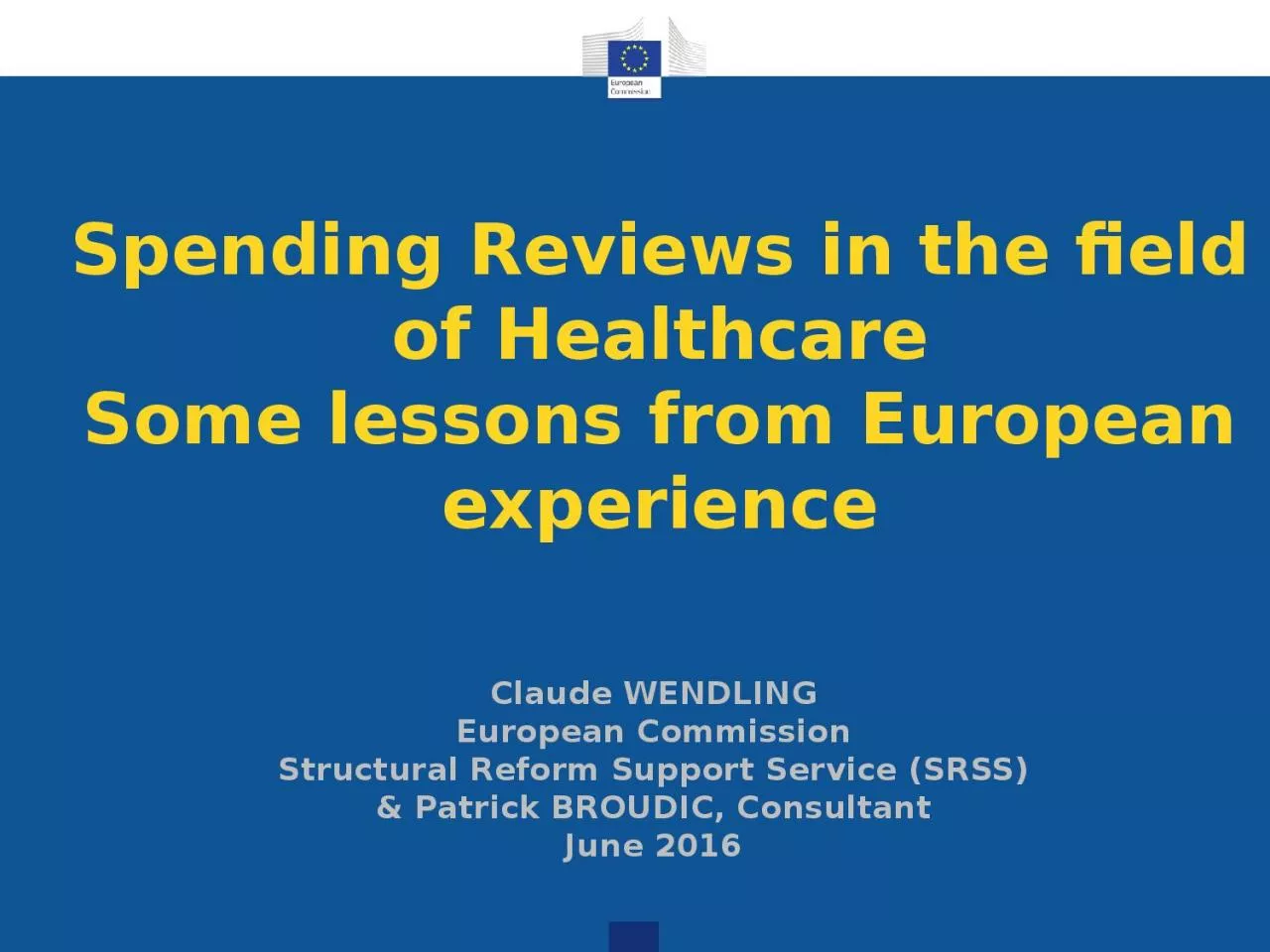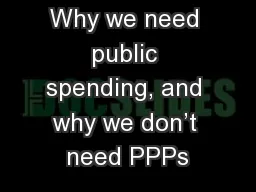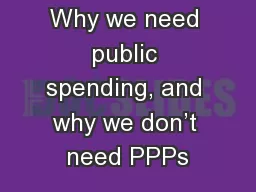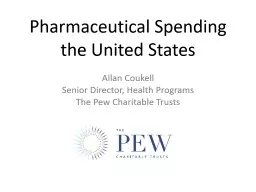PPT-Spending Reviews in the
Author : wilson | Published Date : 2023-11-05
field of Healthcare Some lessons from European experience Claude WENDLING European Commission Structural Reform Support Service SRSS amp Patrick BROUDIC Consultant
Presentation Embed Code
Download Presentation
Download Presentation The PPT/PDF document "Spending Reviews in the" is the property of its rightful owner. Permission is granted to download and print the materials on this website for personal, non-commercial use only, and to display it on your personal computer provided you do not modify the materials and that you retain all copyright notices contained in the materials. By downloading content from our website, you accept the terms of this agreement.
Spending Reviews in the: Transcript
field of Healthcare Some lessons from European experience Claude WENDLING European Commission Structural Reform Support Service SRSS amp Patrick BROUDIC Consultant June 2016. Our library Ebooks collection delivers complete access to the largest collection of digital publications available today Reviews Digital Camera Manual Focus is available through our online libraries and we offer online access to worthwhile books ins Post- Citizens United Era:. . 2014 By The Numbers. Presentation by Sheila Krumholz. To the State Legislative Leaders Foundation . May 7, 2015. How Much Did 2014 Cost?. 2014 Spending. by category. 2014 Spending. By David Hall. d.j.hall@gre.ac.uk. Public Services International Research Unit (PSIRU) . University of Greenwich, UK . www.psiru.org. February 2011. Acknowledgements. Economic role of public spending. Barro. .. United Kingdom 1701-1918. This time period provides an opportunity to study temporary changes in government spending. . (Natural Experiment). The increases in . gvt. purchases appeared mainly as wartime spending with about eight wars(of varying size) occurring during this time . Chartbook Section 1. Section 1: Minnesota Health Care Spending and Cost Drivers. Minnesota health care spending by source of funds. Minnesota health care spending by type of service. Minnesota/U.S. health care spending comparisons. February 3, 2011. Spending Plan. A spending plan is a financial statement you can use to assist in money management. also known as a budget. Set Financial Goals. Set financial goals. . A financial goal should include the following elements- . By David Hall. d.j.hall@gre.ac.uk. Public Services International Research Unit (PSIRU) . University of Greenwich, UK . www.psiru.org. February 2011. Acknowledgements. Economic role of public spending. Source. : . Kaiser Family Foundation analysis of . National . Health Expenditure (NHE) data from Centers for Medicare and Medicaid Services, Office of the Actuary, National Health Statistics . Group. 3-1. WHY HAVE A GAME PLAN?. 3-2. WHY HAVE A SPENDING PLAN?. Live Within your Income. Reduce Financial Stress . Maintain a Good Credit History. Realize Personal Goals. 3-. 3. ELEMENTS OF PERSONAL FINANCIAL SUCCESS. Allan Coukell. Senior Director, Health Programs. The Pew Charitable Trusts. Why are pharmaceuticals an issue?. Rising prescription drug costs. Up 8.4% in 2015 ($310B). 16.7% of total health spend. Specialty drugs are key driver. La gamme de thé MORPHEE vise toute générations recherchant le sommeil paisible tant désiré et non procuré par tout types de médicaments. Essentiellement composé de feuille de morphine, ce thé vous assurera d’un rétablissement digne d’un voyage sur . Using “Big Data” to Track Consumer Spending in Real Time Claudia Sahm Federal Reserve Board March 14, 2019 The views expressed here are those of the authors and not necessarily those of other Watch lovers worldwide have a resource to read Tufina watch reviews and Movado reviews. Mandatory Spending Since 1962 Congressional Research Service Summary Federal spending is divided into three broad categories discretionary spending mandatory spending and net interest Mandatory spendi
Download Document
Here is the link to download the presentation.
"Spending Reviews in the"The content belongs to its owner. You may download and print it for personal use, without modification, and keep all copyright notices. By downloading, you agree to these terms.
Related Documents














